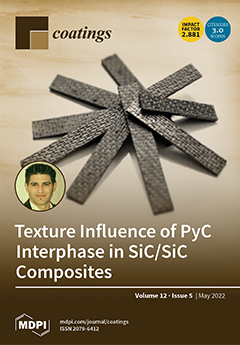A novel 5-(5-Bromo-2-hydroxybenzylidene)-6-oxo-3-phenyl-5,6-dihydro-1,2,4-triazine-2(1H)-carbothioamide (4) “
compound 4” was synthesized. The chemical structure of
compound 4 was confirmed with spectroscopic techniques. Thermal analysis (TGA/dTGA) studies were conducted for identifying the kinetic thermodynamic parameters and the thermal stability of the synthesized
compound 4. Cyclic
[...] Read more.
A novel 5-(5-Bromo-2-hydroxybenzylidene)-6-oxo-3-phenyl-5,6-dihydro-1,2,4-triazine-2(1H)-carbothioamide (4) “
compound 4” was synthesized. The chemical structure of
compound 4 was confirmed with spectroscopic techniques. Thermal analysis (TGA/dTGA) studies were conducted for identifying the kinetic thermodynamic parameters and the thermal stability of the synthesized
compound 4. Cyclic voltammetric studies were performed for recognizing electrochemical characteristics of the synthesized
compound 4. The calculated highest occupied molecular orbital (HOMO), lowest unoccupied molecular orbital (LUMO), and the band gap were found to be −3.61, −5.32, and 1.97 eV, respectively. Using a diffused reflectance spectroscopy (DRS) technique, the estimated values of the optical band transitions of
compound 4 in powder form were found to be 2.07 and 2.67 eV. The structural properties of thermally evaporated
compound 4 thin films were analyzed using field emission scanning electron microscopy (FESEM), X-ray diffraction (XRD), and Fourier transform infrared (FTIR) spectroscopy. It was found that
compound 4 has a triclinic crystal structure. The optical transitions and the optical dispersion factors of
compound 4 thin films were investigated using a UV-Vis spectroscopy technique. From the UV-Vis spectroscopy technique,
was estimated for both the as-deposited and annealed thin films. For the as-deposited film, there were two photoluminescence (PL) emission peaks centered at 473 and 490 nm with a shoulder at 422 nm. For the annealed film at 423 K, there were five PL emission peaks centered at 274, 416, 439, 464, and 707 nm with a shoulder at 548 nm. The dark electrical conduction of
compound 4 thin film was through a thermally activated process with activation energy equaling 0.88 eV.
Full article





